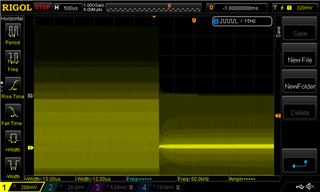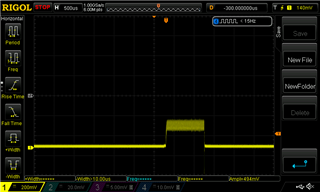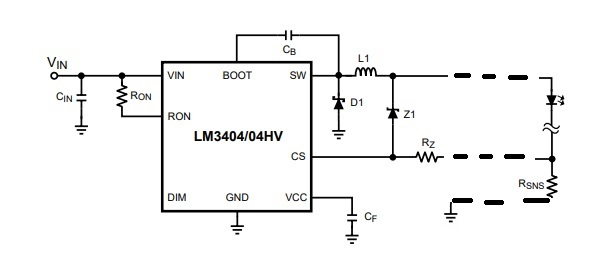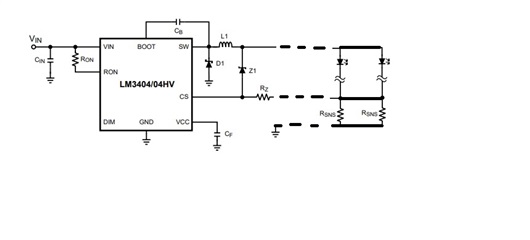- Ask a related questionWhat is a related question?A related question is a question created from another question. When the related question is created, it will be automatically linked to the original question.
This thread has been locked.
If you have a related question, please click the "Ask a related question" button in the top right corner. The newly created question will be automatically linked to this question.
Hi,
we have an application where we want to use the LM3404 to drive one or multiple LED string in parallel. The LED strings are remote. We want the same current on all the strings. To get that we have put the same Rsns in series to all the string and connected the Vsns together like this:

Note all LEDs in the strings are the same all the strings have the same number of LEDs and all Rsns are the same Vo are connected together as well. We have been using this kind of design with the LM3405 and we were able to make it work. However with the LM3404 when we scope Vsns we see a lot oscillations. The LEDs strings still light up. Are the oscillation detrimental to the device? If so, do you have any suggestion on what could cause such oscillations and how could we avoid them?
This is Vsns with LM3404:

This is what we were getting with LM3405:

Hi Carlo,
I do not think the below method is a correct way to make the current on all strings the same. The connection you showed here does not have any difference from paralleling all the LED strings and using a single R_SNS resistor. Please double check.
we have an application where we want to use the LM3404 to drive one or multiple LED string in parallel. The LED strings are remote. We want the same current on all the strings. To get that we have put the same Rsns in series to all the string and connected the Vsns together like this:
Best Regards,
Steven
I'll try to explain why we cannot do a single resistor and we had to choose this route. The Led driver is in a controller, the controller is used to drive and process a sensor. The sensors have different sizes, depending on the size there are different numbers of led strings. If we used only one one resistor, then when we have one string the string would get 100% of the current, if we have 2 strings they would get 50% each and so on. In this way we can have all sensors getting the same amount of current. So let's say I want 20mA per string, if I choose Rsns to give 20mA total, I'd be fine if I have one string but I'd only get 10mA per string when I have 2 strings, 6.6mA for 3 and so on. By adding the Rsns in series to each string we get Rsns that is proportional to the number of string that we have and therefore the current provided by the driver is dependent on the number of strings.
This maybe explains better what we are doing, this is when the driver drives a sensor with one string:

this is when the driver drives a sensor with two strings:

We did this with the LM3405 and it worked.
Also do you think the oscillations could damage the driver?
Thanks
Carlo
Hi Carlo,
Well understood. Sorry I misunderstood your point before. I used to think you want to achieve some averaging effect between LED strings like those shown in this Design IR LED Illumination and ICR Control Reference Design for IP Network Cameras.
Also do you think the oscillations could damage the driver?
For this point, it is hard to say. If the voltage as the CS pin exceeds those specified in 6.1 Absolute Maximum Ratings from the datasheet, then the answer is probably yes.
I do not think this behavior is normal here. Please first check you measurement method here. If ok, then please give me some zoom-in scope captures that shows the oscillation. Please also show me your schematics.
BTW, we have developed the next generation of LM3404 and we have samples now. If you have interest, we can have a further talk through e-mail.
Best Regards,
Steven
Yes we are interested in the new generation of LM3404, how do I contact you via email?
Hi Carlo,
I have sent you a friendship request on this forum with my e-mail address attached.
BR,
Steven